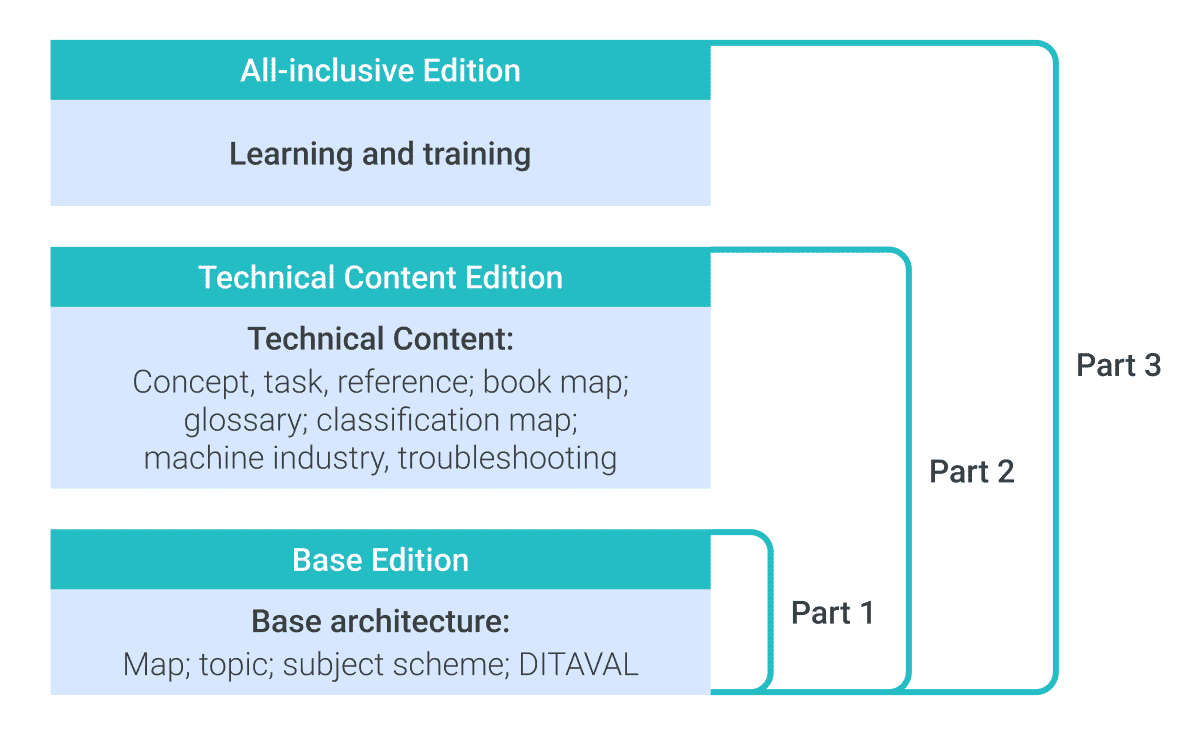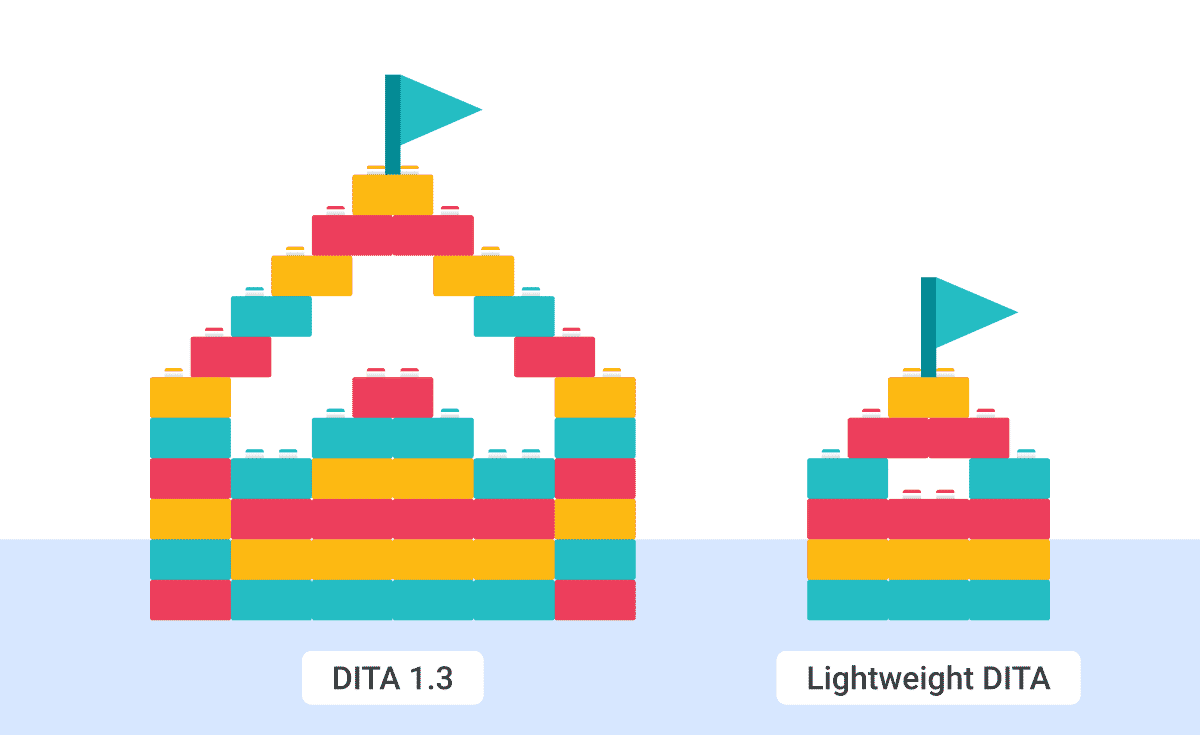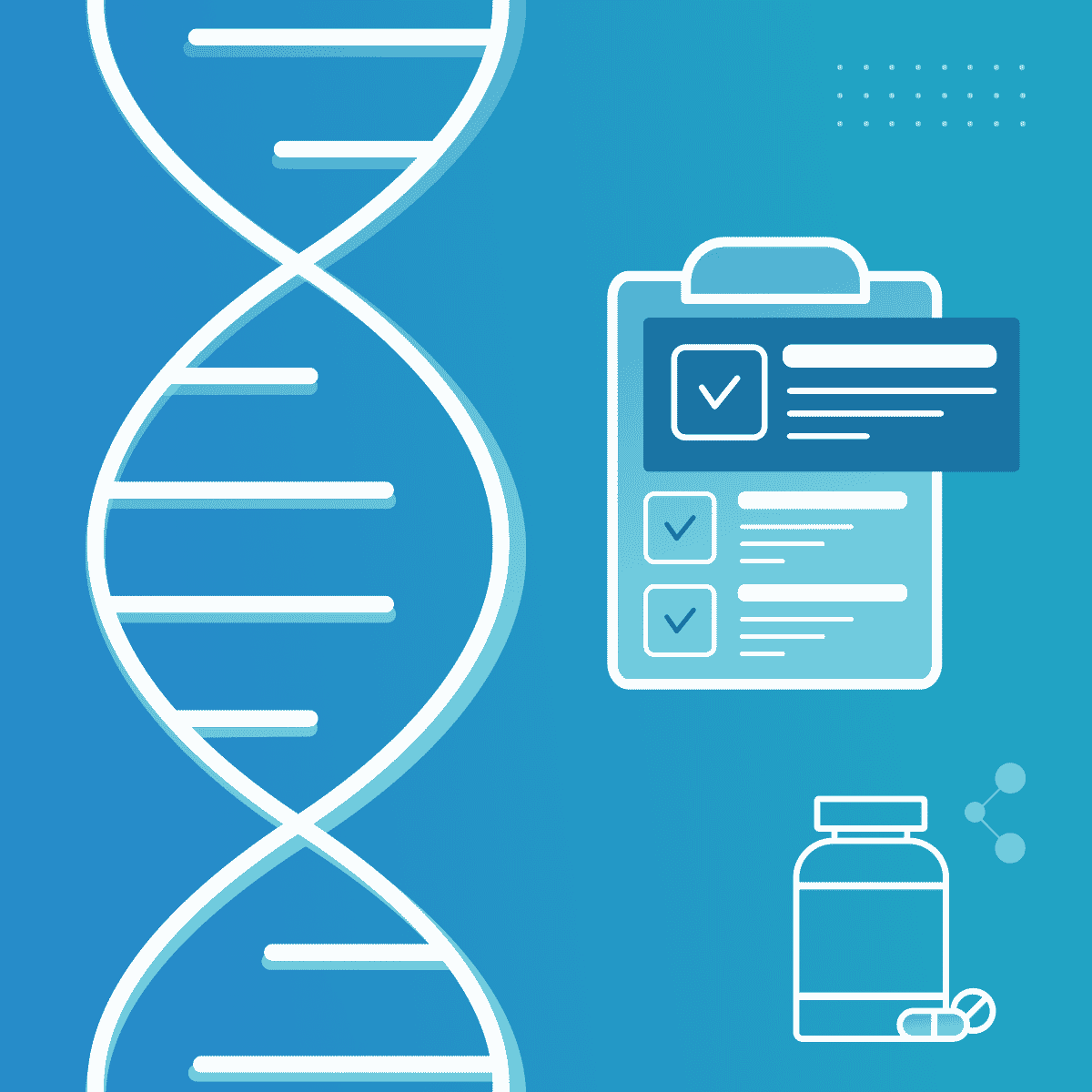Originally contributed by Keith Schengili-Roberts; updated by Leigh White
As the DITA standard celebrates its 15th anniversary this year, we reflect on its existence over the last decade and a half and note how much has changed in the way we think about structured technical documentation. DITA continues to evolve with the DITA 2.0 specification currently in use and Lightweight DITA pointing to other ways the standard can be used.
The Birth of DITA
IBM developed Darwin Information Typing Architecture (DITA) in the early 2000s when it needed to upgrade its proprietary, SGML-based Information Structure Identification Language (ISIL) and resolve its issues with producing standardized content.
During this process, XML was introduced, providing a new, more concise way to formulate data formats. The World Wide Web also came into its own at this time, which forced technical writers to rethink the prevailing book model in favor of a (web) page-based model. This was further refined into a more granular and typed topic-based model. As a result, DITA began to grow, and IBM released the idea freely to the OASIS standards body.
Many things have happened since the initial release of DITA 1.0 in June 2005. As of 2015, the authoring and publishing software tools industry has grown to meet the challenges of working with DITA-based content.
While DITA first took hold in the software sector, the concept of content reuse and all its attendant advantages – content consistency, increased writing efficiency, and lower localization costs, to name just a few – are factors that have led to its rapid spread among many other industries. Though the use of DITA is not universal, the idea of structured content has become part of the general zeitgeist of technical documentation.
DITA Takes Root
Outside of IBM, there were about a half-dozen companies that could be considered DITA early adopters. These companies included Adobe (software), AMD (then ATI), BlackBerry (then known as Research in Motion) and Nokia (both telecom manufacturers), along with Siemens Healthcare (medical devices) and Kone (machinery). Most of these companies were considered “high-tech” with software divisions that could provide version control software to be used as primitive Content Management Systems for holding DITA topics.
Feedback from these early adopters went into new features that were incorporated into DITA 1.1, released in May 2007. This version expanded the simple idea of maps, which provide minimal structure and metadata and are primarily useful for online outputs, to that of bookmaps, which provide extensive book-specific metadata along with organizational elements such as chapters, appendices, parts, tables of content and so forth. It also introduced DITAVAL, used for conditional processing based on assigned attribute values, which allows, for example, generating a different manual for specific audiences or for the details of various operating systems.
.png)
Momentum for DITA continued to build, primarily within the high-tech sectors. By 2008, these included software firms like Algorithmics, BMC as well as Business Objects and Sybase (both acquired by SAP), among others...
Later that year, this list began to diversify, with firms emerging from other sectors: semiconductor firms such as Freescale and Qimonda were now using DITA, along with FamilySearch, Kongsberg Marine and salesforce.com. By 2009, a number of consulting firms catering to firms wanting to move to DITA appeared, such as Innovatia and Scriptorium, joining the ranks of long-established structured authoring consultancies like Comtech in the United States or Mekon in Europe.
More tool vendors began to appear on the scene, such as Syncro Soft with their oXygen XML editor supporting DITA with version 9.0 by late 2007. Version 8 of Adobe’s FrameMaker, also released in 2007, included full DITA support. During this period, other companies such as Antenna House, IXIASOFT, Schema, and XMetal became early supporters of the standard by developing DITA tools and solutions that would give end users more options for using DITA within their organizations.
The DITA 1.2 Sea-Change
Five years after the initial version of DITA was released, the DITA 1.2 specification came out in December 2010. The development of DITA 1.2 within OASIS was somewhat chaotic, with a number of incomplete proposals approved, with the dependencies of elements within some sections not being recognized until the final stages, and with much of the weight of the process falling to only a few OASIS Technical Committee members to review. The number of DITA tags available for use ballooned significantly, adding to the perceived complexity of the specification. One commentator summed up the new standard in one word: “messy”.
While the process that led to the DITA 1.2 specification may have been less than perfect, a number of significant new features came with it, including:
- The ability to classify content via Subject Scheme.
- Link indirection using keyrefs and keys.
- Constraints to limit the number of tags available.
- Optional, more generalized (“general task”) task topic type in addition to the existing “strict” topic type.
- Better handling of glossaries and terminology management.
- Learning and Training specialization.
- A number of additional tags for refining divisions of content, new ways to refer to maps and topics, and more.
Indirect Linking via Keys
Arguably the most significant feature within the DITA 1.2 specification was the indirect linking via keys. Keys allowed content creators to assign a “name” to a reference. Now, instead of referring to a specific object (topic, image, map, etc.) by its filename, a content creator could refer to the assigned name, or key, instead. This indirect way of referring to content was not only a convenient feature for writers, but also significantly enhanced the portability of content, as it was easier to update a single key reference to an object than changing all the URIs if the object was moved or renamed. The feature also enabled more sophisticated conditional processing, further promoting content reuse.
But it took significant time for features such as this to gain significant traction. This was due in part to the specification’s greater focus on software tool developers, making it harder for DITA content creators to fully understand what many of the new features were intended to do. It also took a while for many software tools to become fully DITA 1.2 compliant. By late 2013, roughly a third of all DITA XML editors listed on DITAWriter.com were not fully DITA 1.2 compliant. While lack of full tool support likely hindered the wider adoption of features specific to DITA 1.2, most of the information architects and content creators who worked with DITA for five years are aware of its benefits.
DITA 1.3 Fills in the Gaps
Considering the problems that plagued the development and launch of the DITA 1.2 specification, the OASIS DITA Technical Committee took steps to make the process of creating the DITA 1.3 specification easier. Additions to the developing specification now went through a three-stage process. Approval of an initial proposal was the first step, followed by approval of the overall design of the idea, with the hurdles set higher than for DITA 1.2. If an idea passed the second stage, it went through a final edit round and was added to the draft specification.

The goal of this revamped process was to ensure full oversight of all possible dependencies between one idea and another. The members of the DITA Technical Committee also cleaned up the wording of DITA 1.2 material incorporated in the updated DITA 1.3 specification, with a clear focus on consistency, style and terminology, and, in some cases, re-writing existing sections for greater clarity. The new specification is supplied in three separate versions, designed to make it easier for software vendors and users to focus on portions of the standard for their specific needs.
DITA 1.3 offers many new features and improvements over previously released features. Some of the more significant ones include:
- Branch filtering: DITAVAL conditions can now be associated with particular nodes within a map (previously this could only be done within a root map).
- Built-in support for content-sensitive Help: allows content creators to set attributes for specific callback IDs and their context along with positional information.
- Support for any conceivable output type or device which can be specifically targeted using @deliveryTarget.
- Grouping blocks of content for reuse: the new block-level <div> element can be used to create arbitrary groupings of content, which can then be referenced for reuse.
- XML Mention domain: a new set of elements to describe types of XML markup, including tags, attributes, namespaces and more.
- Key scopes: different key values can now be “scoped” to specific nodes within a map. Cross-deliverable linking will now be possible, opening up the possibilities for creating multiple standalone publications with overlapping keys from within a single, omnibus publication, or a “mail merge” type of output, creating cross-references to content contained within a peer map and more.
- MathML and SVG are now natively supported: adding MathML-based equations and Scalable Vector Graphics (SVG) images – both separate XML standards – is now integrated with DITA 1.3.
- Release management: provides the means to create release note content in maps and topics;
- Turning of tables (and cells): it is now possible to rotate tables and the content of individual cells within a table.
- New troubleshooting topic type: designed to aid readers who are looking to solve problems they are likely to encounter under certain circumstances that content creators can anticipate.
These features, along with a number of other additions, represent a significant update to the existing specification, greatly extending what is possible with DITA. DITA 1.3 was five long years in the making, but it was worth the wait.
DITA 2.0…No Looking Back
All of the DITA 1.x versions were backwards compatible with one another, ensuring that content created using DITA 1.x could still be used and operated with the same behavior within a subsequent DITA specification framework. All that changes with DITA 2.0, which is not backwards compatible. Some of the elements and attributes that have been removed have been deprecated for quite some time but still available. They are gone for real in DITA 2.0!
Some of the wider goals of DITA 2.0 were to improve multimedia integration, enhance accessibility features, provide a mechanism for cross-deliverable linking, improve metadata handling, and enhance multilingual support. There is quite a bit of information online about the changes for DITA 2.0 and how they relate to these goals. This blog only highlights some of the more substantial changes that you’re most likely to encounter in your own content.
The changes in DITA 2.0 fall into three broad categories: new, modified, and removed features.
New features
There are quite a few new elements, many associated with media, such as <video>, <audio> and associated elements. These elements facilitate better integration of media with DITA content and their inclusion ensures that Lightweight DITA, which we mention a bit later, is a proper subset of DITA 2.0.
Other interesting new elements include <em> (emphasis) and <strong>, to be used to indicate, well, emphasis on a word or phrase in a syntactically better way than simply using <b>, for example. Other new domain elements are <hwcontrol>, to be used as a more accurate alternative to <uicontrol> for hardware documentation, and <partno> to denote part numbers.
The troubleshooting topic type includes a new section, <diagnostics>, which can consist of text or steps to take to diagnose the problem.
In bookmaps, there has long been a need for a good place to reference resources such as key definition maps and subject Schemes. DITA 2.0 includes a new bookmap element, <mapresources>, for just these items.
Modified features
In addition to the new and removed elements and attributes, some elements and attributes have been redefined. These changes are mostly transparent, but if you have specialized any elements or attributes based on the redefined items, you might need to adjust your specifications accordingly. Some examples you’re most likely to come across are the task elements such as <info>, <steptroubleshooting>, <stepresult>, <stepxmp>, etc.
Removed elements and attributes
A number of elements have been removed from DITA 2.0. The ones most likely to be in use are <substeps> and <substep>. It is now possible to nest <step> elements, so these two elements are no longer necessary. They should be removed from your content and replaced with nested <steps>. Another noteworthy removal is <sectiondiv>, which can be replaced with <div>.
The alt attribute is no longer available on <image> elements and should be replaced with the <alt> element. The navtitle attribute is no longer available and should be replaced with the <navtitle> element. The chunk attribute now has only two values: “split” and “combine.” All other values are invalid in DITA 2.0. The copy-to attribute is no longer available. There is no single mechanism to replace it, but most solutions will involve the use of keys.
DITA Open Toolkit
To process content containing the new DITA 2.0 structures, you must use DITA Open Toolkit 3.x or higher.
In short, to migrate your content to DITA 2.0, be prepared to find and replace all deprecated structures and to investigate the benefits that the new elements and attributes can bring you when you determine what to use and how. Also be aware that your custom output plugins might need to be updated to work correctly with DITA-OT 3.x or higher.
Some Useful Resources
As mentioned, there is a lot of information online. Here are a few resources with many more details than what is offered here.
- https://www.dita-ot.org/dev/reference/dita-v2-0-support.html
- https://blog.oxygenxml.com/topics/dita_2_0_specification_support_cheat_sheet.html
- https://www.oasis-open.org/committees/download.php/69118/2021-DITA-2.0-Webinar-for-Vendors.pdf
- https://www.scriptorium.com/2021/05/dita-2-0-what-to-expect/
- https://www.ixiasoft.com/lightweight-dita-what-is-it-and-can-i-use-it-in-the-dita-cms/
- https://www.ixiasoft.com/lightweight-dita-and-dita-2/
Can I Try DITA 2.0 in the IXIA CCMS?
Beginning with IXIA CCMS 7.0, yes you can. We have an experimental integration of DITA 2.0 that enables you to create and work with DITA 2.0 content alongside DITA 1.3 content. (We no longer offer a package that is compatible with DITA 1.2.) If you are interested, contact Support or Customer Care to download the integration package and instructions.
Lightweight DITA
OASIS has also created an interesting offshoot of mainstream DITA known as “Lightweight DITA” (LwDITA). The goal was to strip DITA down to its fundamentals, providing a down-sized version for those who do not need all the features of the full DITA specification. For example, at the moment a standard paragraph in DITA can include more than 60 specific tags, allowing content creators to add everything from blocks of code, notes, hazard statements, syntax diagrams, menu cascades, UI controls, etc. Lightweight DITA brings that number down to a handful, supporting a more restricted but straightforward set of tags (e.g., standard inline formatting elements, link addition, image, and phrase insertion).

Lightweight DITA is not designed to replace the full specification, but instead allows DITA to be adopted by a broader range of applications, both within and outside of the traditional technical content community. A good example of this is the recent implementation of Lightweight DITA using Markdown – a simplified language used for producing HTML – instead of XML tags, which helps non-content creators to contribute DITA content in a simplified, forms-based way. Another focus of Lightweight DITA is to expand its use outside of technical communication, for example, new topic types specifically for marketing departments.
Over the past fifteen years DITA has grown significantly in popularity. It has evolved and become a very flexible tool helping technical communicators to make their processes more efficient. Thus, it seems very likely that DITA will be around for another fifteen years and beyond.












